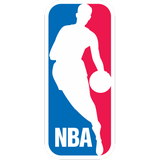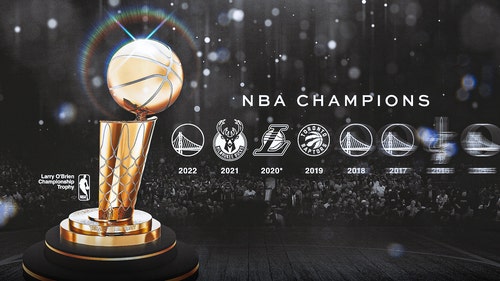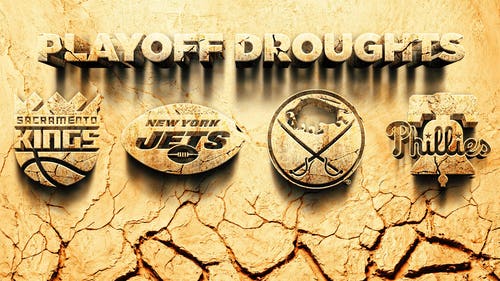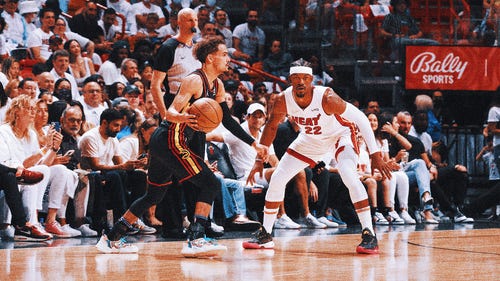
Blazers will go as far as Roy carries them
Game time: Trailblazers 96, Spurs 84
This was an important win for Portland for several reasons.
Let's examine what each of the Blazers contributed to the victory.
Steve Blake — Hit several key shots. When offered a high screen, turned it down to step back and drop a long jumper, yet also took Tony Parker off the dribble for an easy score. Kept the ball moving and never forced a shot.
But, even though he played with admirable confidence and effectiveness on offense, and even though he did rip Parker, Blake's overall defense was often shaky — especially on the weak-side.
Andre Miller — Usually played the point when paired in the backcourt with Blake. Made several nifty entry passes into the low-post. Looked to pass more than to shoot. His lateral movement isn't what it once was, yet his arms are still long and his hands are still fast — which enabled him to pilfer the ball from Manu Ginobili on two occasions.
But, he forced a couple of passes and at least one shot. Was also taken by Ginobili twice. And his off-the-ball defense was very spotty.
Brandon Roy — Scored in a wide variety of ways: Shooting jumpers after curling over weak-side screen (he uses screens exceptionally well). On the run. From the perimeter. Moving without the ball. Driving to the hole. And whenever the Blazers absolutely need to score, Roy gets the ball in the middle of the court and steps above the 3-point line, and then goes one-on-one — sometimes with a screen, but mostly without one. Lest defenses simply gang up on him, Roy also looks to make profitable passes — like the lob he tossed to a back-cutting Oden.
But, Roy's defense was barely passable.
LaMarcus Aldridge — Early on, he took Matt Bonner into the pivot but came up empty on three possessions, yet he recovered by tallying a total of four points on three subsequent post-ups. A forceful back-cut eventuated in a dunk after receiving a lob pass from Rudy Fernandez. On defense, Aldridge made a terrific rotation that drew a charge on Tim Duncan.
But, he seemed somewhat passive at both ends and seemed reluctant to take any shots in the endgame.
Greg Oden — Made several strong moves against Duncan in the low post, i.e., three jump hooks and a drop-step and layup from the left box, as well as an overpowering baseline drive from the right box. He even hit a 10-foot jumper that got a shooter's roll after hitting the front rim. Oden set one extraordinary screen and several good ones. At the same time, Oden did his best work on defense, blocking four shots. Holding his ground on several sequences when Duncan looked to score from the pivot, thereby forcing awkward misses and blocking one of Duncan's shots. Overall, he effected eight exceptional defensive rotations and intimidated several shots.
But, needing to gather himself before putting the ball up in the low-post, Oden had two of his own shots blocked — and when Duncan had good defensive position, Oden rushed his moves and got his feet tangled. Likewise was he off-balance and hesitant when San Antonio doubled him. He made seven poor defensive rotations, and was vulnerable whenever Duncan turned-and-faced.
Joel Przybilla — Had 13 rebounds in only 18 minutes. Grabbed six offensive rebounds, but kept at least a dozen more possible possessions alive by tipping the ball and keeping it up for grabs. Set a number of sturdy screens. Was aggressive when Duncan turned and faced, and maintained solid defensive position in the low-post. His general activity on defense culminated in six exemplary rotations. Made four quick and precise outlet passes that led to good scoring opportunities for his teammates on the run. The Blazers showed better spacing on offense when Przybilla was on the court, and during his initial (1st quarter) rotation, they took control of the game. And he even converted both of his free throw attempts!
But, he made a single late rotation.
Travis Outlaw — In always looking for his shot, he was merely doing his assigned job — zero assists and two turnovers. Although he only shot 4-9, he did drop a critical 17-footer, hit a trey, and easily beat Antonio McDyess for a layup.
But, he was too hot-footed on defense and was often burned when he failed to maintain proper position.
Martell Webster — Ran the court.
But, he forced too many shots and passes. Made several poor decisions on defense.
Rudy Fernandez — Quick hands on defense, a quick and successful drive to the hole, and a wonderful lob pass to Oden.
But, he unleashed too many ill-advised shots.
Jerryd Bayless — Showed great quickness in slashing to the hoop with his right hand — count it, and one!
But, he repeatedly over-handled, made too many risky passes, and was abused on defense by George Hill.
Whenever the Blazers were able to get out and go, they always generated good looks. Similarly, whenever they executed good ball and player movement in half-court sets, the results were also beneficial. But as the game wore on, their concentration was frayed, their weak-side activity diminished, and they depended more and more on high screen/rolls and on isos for Roy.
For sure, Portland mostly played alert defense, but a major cause of the Spurs downfall was their failure to convert wide-open shots — 38.0 percent from the field, including a miserable 19.0 percent from beyond the arc.
Although Oden was able to establish a scoring presence in the pivot, he scored only eight points on nine post-ups while also committing a pair of turnovers. Still, with Oden developing his one-on-one inside play, the Blazers offense is much more resourceful. Sooner rather than later, however, Oden will have to learn how to deal with double-teams.
And if Oden can continue being a defensive force to be reckoned with in the paint, then the Miller-Blake backcourt will be viable.
Also, the Blazers 2nd unit — Fernandez, Webster, Bayless, Przybilla, and Outlaw — just might be the most athletic off-the-bench five in the league.
The still-youthful Blazers are showing increasing signs of maturity. Having Miller on board certainly accelerates their learning process.
However, for the time being, Brandon Roy remains the backbone of their offense — and Portland will advance only as far as he can lead them.
Straight Shooting
At the risk of defaulting on my hard-earned reputation as a grouchy naysayer, here's a list of my favorite NBA players. Not necessarily the best, but the ones whose games I most admire.
Louis Amundson — plays all-out all of the time, with or without the ball.
Carmelo Anthony — can score from anywhere at any time against anybody.
Shane Battier — has lost a half-step but, like John Wesley Harding, rarely makes a foolish move.
Raja Bell — the successor to Bruce Bowen as the NBA's most ruthless defender.
Chauncey Billups — one of the most mature players in the league.
Kobe Bryant — by far the best and most creative player alive.
Tim Duncan — basic, fundamental brilliance.
Derek Fisher — always honest and humble, a quiet leader who's especially dangerous in the clutch.
Pau Gasol — perhaps the NBA's most intelligent player.
Manu Ginobili — always capable of doing the unexpected.
Richard Hamilton — his off-the-ball movement should provide an example for all young hooplings.
Udonis Haslem — isn't afraid to do more than his share of the necessary dirty work.
Chuck Hayes — does the most with the least.
Grant Hill — proof that nice guys don't necessarily have to finish last.
Kirk Hinrich — a surprisingly adept defender whose perpetual hard-scrabbling game plan is inspirational.
Royal Ivey — the one defender opposing guards don't like to face.
Joe Johnson — if he played in New York, Chicago, or L.A., he'd be celebrated as one of the game's most extraordinary two-way players.
Steve Nash — handles the ball like a magician flashes a gold coin.
Jameer Nelson — a tough little sucker who's really Orlando's key player.
Joakim Noah — he's learned to play within his limits and is never out-hustled.
Andres Nocioni — tough enough and then some.
Anthony Parker — a consummate role player who needs more shots than he's currently getting in order to maintain his stroke.
Kendrick Perkins — represents the bulk of Boston's power game.
Paul Pierce — the utterly reliable go-to guy on the league's best team.
Luis Scola — has parlayed his grit, smarts and limited talents into being perhaps the most underappreciated player in the league.
Thabo Sefolosha — does anybody defend Kobe better?
Dwyane Wade — Miami's Mister Wonderful.
Delonte West — provides the unsung toughness and the willpower that can get the Cavs over the top.
Deron Williams — imagine how good he'd be if he operated in a less restrictive system.
Yao Ming — too nice, too humble, too talented and too tragically injury-prone for anybody to ever root against.
Vox Populi
I realize that most basketball fans may think this to be an improbable eventuality, but could you do a San Antonio-Boston matchup just in case they were to meet in the finals? — Vishwanath, Fairfax, VA
|
|
POINT GUARDS
Rajon Rondo might be a mite speedier than Tony Parker, and both are incredibly key performers for their respective teams. Give the former the edge in defense, and the latter the edge in offense. TP needs to do more for his team than does Rondo, and is usually successful.
The backups are Eddie House (a one-dimensional but incredibly accurate shooter) and the multi-dimensional skills of George Hill.
Advantage: Spurs
SHOOTING GUARDS
The Celtics' twosome comprises Ray Allen and Marquis Daniels, while San Antonio has Michael Finley and Manu Ginobili. The only meaningful comparison actually involves Allen versus Ginobili. Allen is a more consistent spot shooter, while Ginobili's offense is much more electric. Neither is an especially adept defender.
Advantage: Spurs
SMALL FORWARDS
Richard Jefferson is very good at what he does, but Paul Pierce is incredible. Daniels and Ginobili play support roles.
Advantage: Celtics
POWER FORWARDS
Here's where the going gets tough — Tim Duncan pitted against Kevin Garnett. If KG plays better on-the-ball defense, TD provides more efficient help. Because Duncan can post in such a manner as to draw fouls, while Garnett is mainly a turnaround jump shooter from the pivot, TD is more versatile.
Behind them are journeyman Shelden Williams for Boston, and DeJuan Blair for San Antonio, with much more of a potential upside.
Advantage: Spurs
CENTERS
Matt Bonner gets to start, but Antonio McDyess normally gets to finish. The same pattern also matches the roles of Kendrick Perkins and Rasheed Wallace. In truth, both of Boston's centers are far superior to San Antonio's middlemen. Indeed, this is the most lopsided matchup.
Advantage: Celtics
In Parker, Ginobili, Jefferson and Duncan, the Spurs can field more reliable point-makers than Boston's trio of Allen, Pierce and Garnett. But given that Ginobili will play many more minutes than will Finley (or Roger Mason), House and Wallace give Boston more firepower off the bench.
More importantly, though, Allen, PP and House provide steadier perimeter accuracy than Parker, Jefferson and Ginobili. And in a battle of such outstanding defensive teams, outside shooting just might be the difference.
In addition, the Celtics can field more individual practitioners of lock-down quality defense (Rondo, Pierce, Garnett and Wallace) than can the Spurs (Duncan and Jefferson).
The rebounding advantage is Boston's, as is the precision and quickness of its defensive rotations.
Should these ball clubs confront one another in June, the pick here is Boston in 6.
Travels with Charley
Part 1 of 2
My active playing career spanned exactly 43 years. During that time, I had several memorable outings, both good and bad.
Saving the worst for next time, here are the best games I ever played.
"Are you kidding? This is my home court."
"Good. Stay outside and shoot away. He'll never come out and challenge you. On defense, sit on his right hand and make sure you box him out."
I did as I was told and outscored Hoover 20-12.
However delightful these accomplishments were, they were overshadowed by a much larger number of nightmarish and embarrassing on-court experiences.








